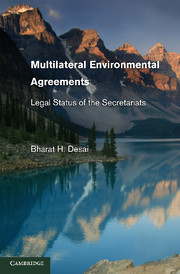3 - Nature and Character of Environmental Agreements
Published online by Cambridge University Press: 05 September 2013
Summary
Introduction
As discussed in the previous chapter, the twentieth century witnessed unprecedented growth in the making of treaties, not only as codification exercises for existing customary state practices, but also as regulation of numerous subjects that confront the states. An important outcome of intergovernmental institutionalized cooperation in environmental matters has been the growth of a unique body of treaty-based and other rules. The advent of such environmental agreements seems to carry the “genes” and imprint of the maker/initiator. The methodology of treaty making in this field stands apart from that in other areas of international law as it reflects the changing needs of sovereign states in an increasingly complex world. It has also heralded qualitative and quantitative change in the character of international environmental law. This phenomenon of multilateral environmental agreements (MEAs) needs much closer legal scrutiny regarding its nature and character, the uniqueness and content of MEAs, and the lawmaking approach followed in marathon global environmental conferences.
Proliferation of Agreements
MEAs have emerged as the “predominant legal method for addressing environmental problems that cross national boundaries.” The pace at which the multilateral instruments concerning environmental issues are growing remains unprecedented. From the earliest reported multilateral treaty concerning the environment in 1868, approximately 502 international treaties and other agreements have taken shape. Of these, 302 (a staggering number, almost 60 percent) have been entered into since the 1972 Stockholm Conference.
- Type
- Chapter
- Information
- Multilateral Environmental AgreementsLegal Status of the Secretariats, pp. 47 - 96Publisher: Cambridge University PressPrint publication year: 2010



